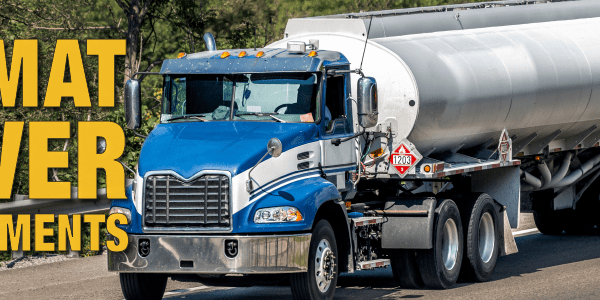The World Could be Fun if Everything Jived Together
Let’s start on a tangent to our main topic of Regulations today. The word “jive” is used when talking about music, mainly jazz and swing, whereas the word “jibe” talks about things being in agreement with one another . . . or at least that is my understanding from what I’ve read. I think it would be neat if everything in the world kind of swung together, however impractical and problematic it might be.
So let us start over more formally and say that the world might be easier if some things would jibe. By now, it is common knowledge that Transport Canada recently updated its TDG Clear Language Regulations. The trickle-down effect certainly has the potential to be quite widespread, and I wanted to bring to light a little nook or cranny that got affected with this update.
Around Vancouver, B.C., we have a Transportation Act that deals specifically with a couple local tunnels.
It can be found here:
http://www.bclaws.ca/EPLibraries/bclaws_new/document/ID/freeside/14_275_2006
How Changes Can Affect Local Rules
In the past, the rule from 2(1) essentially translated to, “one may not drive dangerous goods through the tunnel if there are placards on the truck.” This was fairly straight forward. Upon closer analysis though, one can see that the wording is actually a bit different. In the quote below, I’ve crossed out some words and added my own in red to narrow the scope and clear things up for the sake of argument.
“A person must not transport any means of containment a vehicle in a prohibited area tunnel at any time when section 4.15 of the Transportation of Dangerous Goods Regulations, SOR/2001-286 TDG Regs, requires that a placard, within the meaning of that regulation, be displayed on the means of containment must be on the vehicle.”
A person must not transport a vehicle in a tunnel at any time when section 4.15 of the TDG Regs requires that a placard must be on the vehicle.
TDG 4.15 used to give us a nice table explaining when one must use placards and when one doesn’t need them. Essentially, it said, if the vehicle does not have stuff that has an ERAP, is Radioactive Cat III, is in a large means of containment, or has dangerous goods exceeding 500 kg Gross mass, no placards are required.
Now, TDG 4.15 says this:
“The primary class placard for each of the dangerous goods contained in a large means of containment, other than a ship or an aircraft, must be displayed on each side and on each end of the large means of containment.”
If the vehicle has any dangerous goods shipped as fully regulated, it must have placards. TDG also included 4.16.1 which is a placarding exemption stating that there are times when a vehicle does not have to have placards while transporting fully regulated dangerous goods. The intention was good. In 4.15, it emphasizes the idea that placards are put on the vehicle when there are dangerous goods inside. This jibes with our American friends down South as what they do is pretty much the same thing.
Our problem comes up with the fact that the local Transportation Act for Tunnel Transportation doesn’t reference 4.16.1. It still states that if placards are required as per TDG 4.15, the vehicle can’t go through the tunnel. Well now, for fully regulated shipments, placards are always required by 4.15! The way it’s currently worded, even if a vehicle is taking advantage of 4.16.1, and thus doesn’t even physically display placards, it is not in compliance with the Transportation Act for Tunnels since TDG 4.15 says it must have placards.
What can we do?
I have tried to do my due diligence by speaking to some of the local authorities/experts on this topic and they’ve all been great. Even through some of my muddled explanations, they respectfully listened to me and two different contacts promised to keep me in the loop with a heads-up when something gets changed on paper. Understandably, these processes take time so we may very well see an intermediate solution in the form of a memorandum describing the intent of the Transportation Act for Tunnels if the paperwork doesn’t get published before the January 14th deadline when the grandfathering period of the old TDG ends and people must reference the new TDG, including Amendment 12.
This is just one example, perhaps overly longwinded as can be my style. I like the image of wind as it gives me a mental picture of everything swaying and jiving together in harmony. Perhaps one day, the Regulations will have that relationship with one another . . . perhaps not.
Anytime there is an overhaul to the rules, such as is the case with the new TDG Amendment 12, I encourage you to review some of those things that you might have come to consider as second nature. If something doesn’t jibe locally for you, reach out to the authorities and ask what the plan is so that you don’t fall out of sync.





